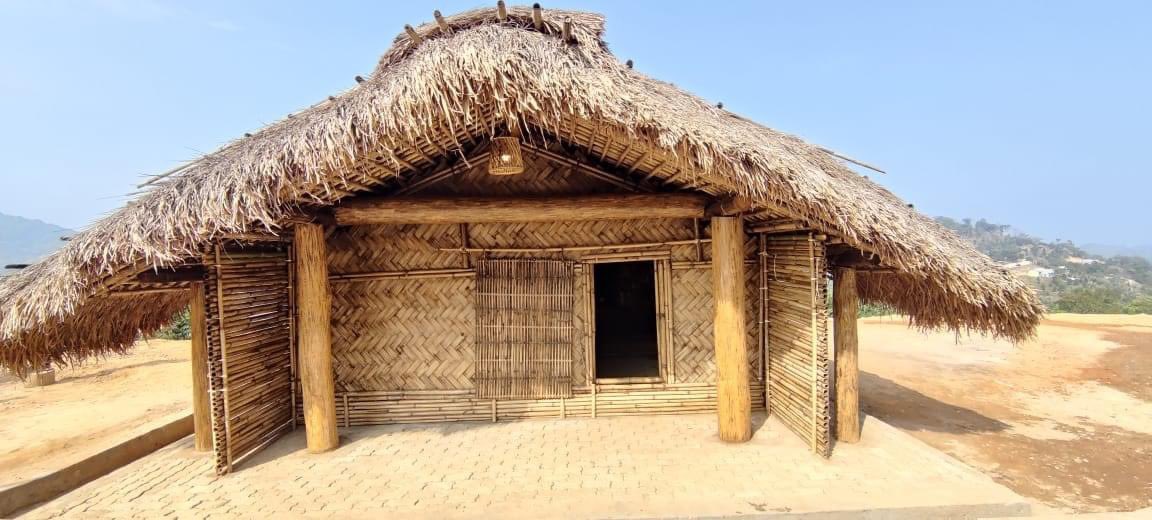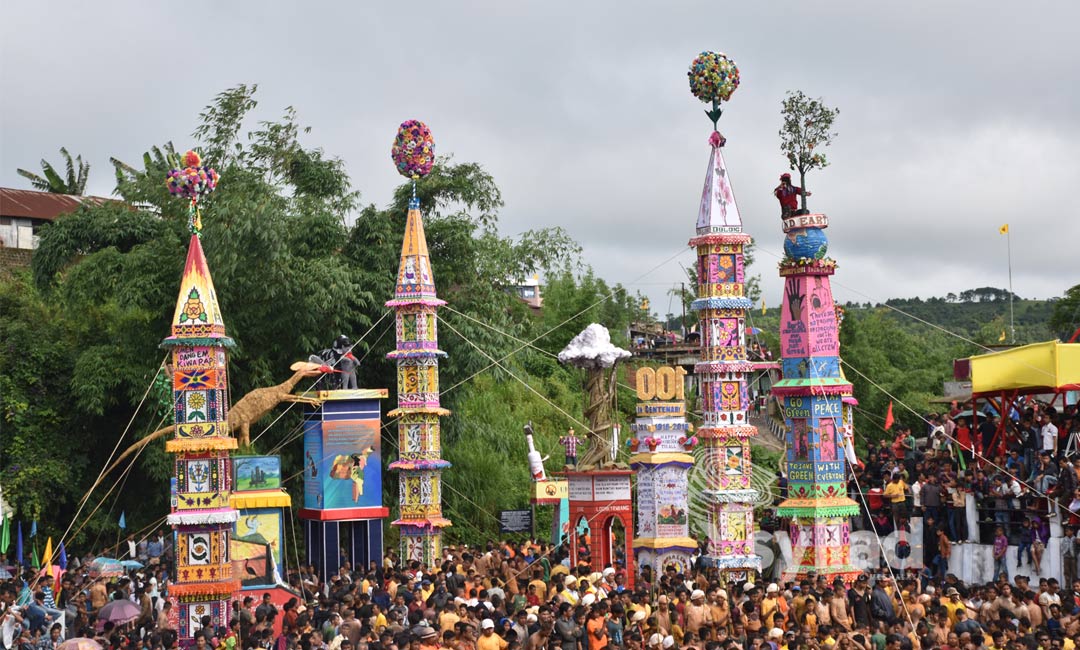By Mihir N. Sangma
(The Garos are an indigenous people in Meghalaya, India and neighboring areas of Bangladesh, who call themselves A’chik Mande (literally “hill people,” from a·chik ”hill” + mande ”people”) or simply A’chik or Mande. They are the second-largest tribe in Meghalaya after the Khasi and comprise about a third of the local population.)
Nokpante or Bachelor’s House:
The other important house of the Achik people other than the dwelling house is “Nokpante” or Bachelor’s House. Nok= house, Pante= Bachelor or unmarried man. This house is specially constructed to sleep or to stay of the Bachelors and known as “Nokpante” or Bachelor’s House. In olden days there could be seen Nokpantes in each and every A’chik village, even more than one where the Bachelors are more in numbers in the village. Nokpantes or Bachelor’s House are rarely could be seen this days in the interior villages of Achik people in A’chik land. Nokpantes are often of greater in sizes but much shorter in length than the dwelling houses. This house is constructed like dwelling house with a durable and strong round posts and piles on a considerable incline nature of the soil. So, the sizes and the materials used, like posts and piles e not of the same length. It differs from the construction of dwelling house as arranged in position. The main entrance starts from the ground level as with the case of dwelling house, whereas Nokpante front side is on the higher from the ground level. Up to the flooring of the house, noched a long wood, served as a staircase and on the top end, provided a hole where a long piece of cane known as “Regla” tied with it and suspended to the ground, close to the staircase which helps to climb up and down. This is locally known as “Kalkame Kime.” The two main front posts of the house and the other two supported posts an known as ”Bangpak” and the front cross beam which supported the staircase is called “Jangbatra”, and on the top another tie beam fixed from one post to the other is called” Bilbang” and the ridge post longitudinal timber is known as “Bolgro”. On all these posts, cross beam, on the top and on the house floor on the front side of Nokpante are decorated with various forms of curbing like male and female of humankind and various animals and birds and the colours they used of their own. Curbing with the fine arts are locally known as “Do sateka.” Over and above the Nokpante house is exceptionally specialised with a skilled hand curbing of the king posts are known as “ Do kaku” which represents some of the traditional designs and decorations which is methologically very important one.
The most of these kinds could be seen among the villages of Garos, Gan chings and Atong sub-tribes like Eman A sak, Eman Gatabilgre, Eman Songmagre, Eman Rompagre, Gitinggre and Siju at the southern villages of the South Garo Hills district. In spite of that, these villages are well known for special hands of dressing timbers, curbing, of woods, cane and bamboo works. They inherited such qualities from the cultures of the passed forefathers from generation to generation.
But in this age of a modem civilisation, due to the impact of a modern cultures and many factors, the old age cultures and many heritages can be seen on disappearing from the society very fast.
The main object of construction: Under any circumstances, the A chik people were much particular and conscious about good moral characters and such maintenance was known even by many other cultured people of the world as mentioned by many scholars. It is specially, among boys and the girls in particular, one’s virginity was always counted. As we know that there is no separate rooms for sleeping in Nokachik or dwelling house. It was constructed and only provided in a type of dormitory. For such a reason behind, the young boys do not sleep at the house with the parents and other female members of the family. It was improper and obscene to them at any how. The young boys from a village sleep together at separate house and there they spend most of the time and thus keep the sanctity of their youth and this house is known as” Nokpante” or Bachelor’s house. Nokpante or Bachelor’s house is only for the unmarried young men. Nokpante rule does not allow any female member to enter into it, What ever the case may be, the female members even touching of clothes belonging to the un-married young man feels improper and thereby may spoil the chastity of one’s life. There are oral rules and regulations of Nokpante with which Nokpante was maintained and accordingly exercised by the senior most unmarried man at Nokpan.
Various usages of Nokpante or Bachelor’s House
Nokpante or Bachelor’s House is mainly for sleeping of unmarried men and the boys of the village. In spite of that it is using for more purposes. In Olden days there were no school colleges and other institutions and training centres to the young boys in A chik A’song. We are to accept that our forefathers were well cultured people and had vast knowledges in all respect traditionally. The young generations had such c trainings on the field as well as at Nokpante only. After all, the Nokpante of Bachelor’s house is a large institution to the young people. Some of them are as follows:
1. Nokpante as a training centre or a school.
2. Nokpante as a technical or Engineering Institution,
3. Nokpante as a Music School,
4. Nokpante as an Agricultural Institute,
5. Nokpante as a Training centre of Defence
6. Nokpante as a Club-house and Physical Training Centre,
7. Nokpante as an Industrial Training Centre
8. Nokpanate as a Medical Institute,
9. Nokpante as a Rest House and
10. Nokpante as Court House.






